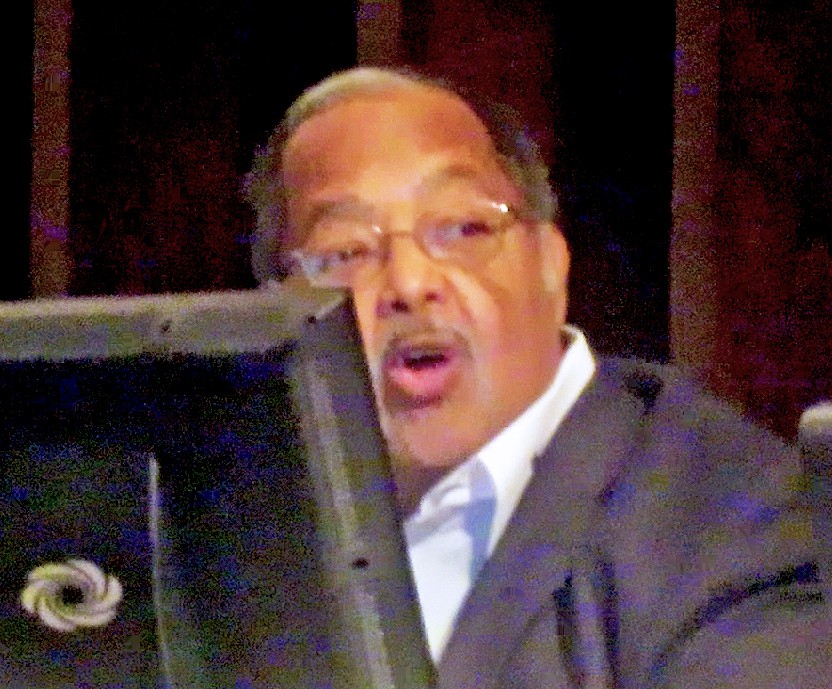 JB
JB
Council chairman Lowery: Necesary ‘to remove the symbols of bigotry….’
The Confederacy lost the first Battle of Memphis — a one-sided 1862 affair decided by Union gunboats— in roughly two hours’ time, with minimal loss of life. The second Battle of Memphis took a little longer — a morning and an afternoon session of the Memphis City Council on Tuesday— but the outcome was the same, a defeat for the Confederacy.
To be sure, there are skirmishes yet to come: There must be a second and third reading — both likely pro forma —of an ordinance to remove the statue of General Nathan Bedford Forrest from Health Sciences Park (formerly Forrest Park).
And there are certain legal complications pertaining to the statue’s removal and to a concomitant resolution calling for the return of the remains of the vaunted Confederate cavalry leader and his wife to Elmwood Cemetery, where they were originally interred before being reburied under the current statue in 1905.
But the ordinance and the resolution were both approved unanimously by a Memphis City Council that, like the city itself in the 21st Century, is almost evenly divided between blacks and whites, with blacks having a slight preponderance.
The meaning of this and other recent events, here and in other parts of the South and the nation, is clear: The Civil War is over, finally. The Confederate aura had endured for a century and half after Appomattox through what Lincoln (in a much different sense, ironically) referred to as “the mystic chords of memory.”
It was kept alive through sentimental attachment to the idea of a “lost cause” and to its symbols, a ubiquitous and proudly displayed battle flag and heroic monuments virtually everywhere in the Old South, along with an inherited reverence for the valor and battlefield accomplishments of Confederate arms.
But that aura is dead or dying now, its expiration speeded along by a horrific atrocity committed against innocent African Americans by a young fanatic in Charleston, South Carolina who wrapped himself in the imagery of the Confederacy.
South Carolina, the fount of secession, whose officialdom, in response, lost no time in taking down the Stars and Bars from its state-sanctioned place of honor. Just as Memphis has hastened to deal with its Forrest problem.
And that problem was spoken to succinctly on Tuesday night by, of all people, Bill Boyd, the venerable survivor of the old white-tinted South Side who can, as he did Tuesday night, cite the fact that Marcus Winchester, the first Mayor of Memphis, was his great-grandfather.
Defenders of Forrest, of whom there were a handful who testified before the Council on Tuesday night, are at pains to deny Forrest’s complicity in the massacre of surrendering black Union troops at Fort Pillow in 1864; they maintain that the General was not really the founder of the Ku Klux Klan or that, if he was, it was not a viciously intended organization with racist terror at its core, or that, if other, rasher sorts allowed it to become that, Forrest expeditiously dissociated himself from it. Or whatever.
They like to quote from the soothing and conciliatory words of an address the post-war Forrest, by this time a Memphis businessman and political figure, is reported to have delivered to an assembly of newly freed blacks.
Councilman Boyd made allowance for all these objections and attempted exculpations in his remarks. But they all ignored the one fact of Forrest’s life that was both undeniable and unforgiveable: that he made his living before the war as a slave trader. That was something Forrest did of his own free will, for personal gain, said Boyd. Slavery was the stain on him, it was the stain on the Confederacy, and there was no defending it. And that was why Boyd was willing to see the general’s statue and remains removed from a place of official honor in downtown Memphis.
Somewhat later, just before one of the unanimous votes on the subject, Councilman chairman Myron Lowery made the point that Forrest “had once been a member “of this body.” Technically, this was not so; the former General did indeed become a Memphis alderman, but that was a full century before the creation of the modern Memphis City Council in 1967.
It was certainly so in spirit, however, and, as Lowery pointed out, “we” — presumably meaning those Council members who were African-American, a majority — “could not have sat beside him.” Times had changed, Lowery said. And indeed they have. What was necessary today, said the chairman — or “politically correct,” a phrase he used in a consciously, even defiantly non-ironic sense — was “to remove [the] symbols of bigotry, hatred, and racism from public property.”
The battle flags are coming down everywhere; and so, with the widespread post-Charleston publication of those vintage manifestoes whereby the Southern states proclaimed white supremacy and the necessity for eternal black bondage as their rationale for secession, have a set of self-deluding illusions that had somehow managed to persist for 150 years.
After all this time, it may be just now that the Confederate era is over and the Civil War has finally come to an end.